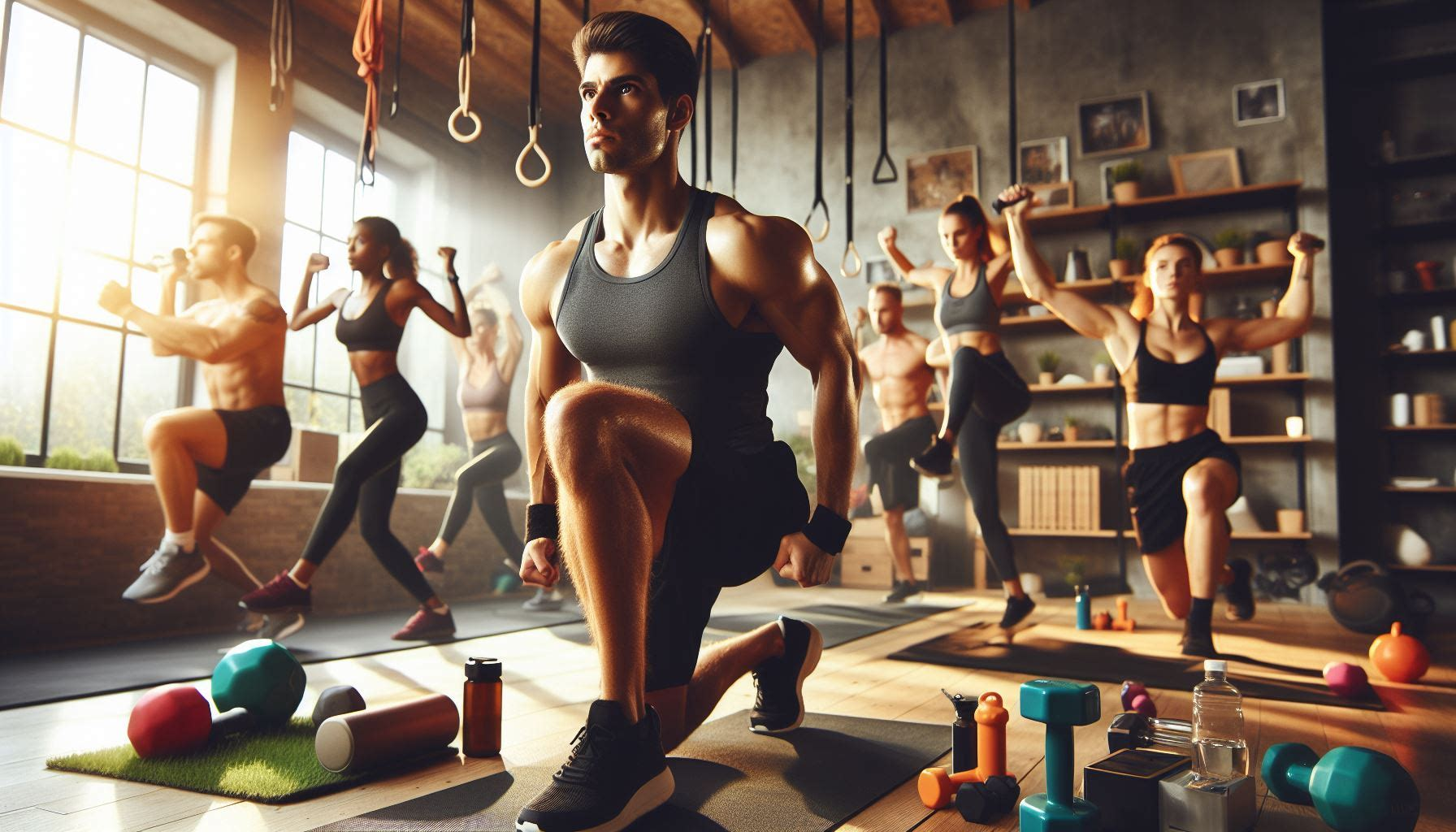In recent years, there has been a notable shift in the fitness landscape towards functional fitness and home-based workout routines. This trend has been fueled by various factors, including convenience, accessibility, and the desire for versatile training methods that improve overall health and strength. In this article, we’ll delve deeper into the rise of functional fitness and home workouts, exploring the benefits, principles, and practical tips for incorporating these practices into your daily routine.
Understanding Functional Fitness
Functional fitness focuses on exercises and movements that mimic real-life activities, improving strength, flexibility, balance, and coordination. Unlike traditional gym workouts that isolate specific muscle groups, functional fitness emphasizes full-body movements that engage multiple muscle groups simultaneously, enhancing overall functional capacity and mobility.
Benefits of Functional Fitness and Home Workouts
One of the primary advantages of functional fitness and home workouts is the flexibility and convenience they offer. With minimal equipment and space requirements, individuals can perform effective workouts from the comfort of their homes, eliminating the need for expensive gym memberships or commuting to fitness facilities. Additionally, home workouts allow for greater customization and adaptability to individual fitness levels, preferences, and schedules.
Key Components of Home Workouts
Home workouts can incorporate a variety of training modalities, including bodyweight exercises, yoga, and high-intensity interval training (HIIT), among others. Here’s a breakdown of each component:
- Bodyweight Exercises: Bodyweight exercises, such as squats, lunges, push-ups, and planks, are fundamental components of functional fitness workouts. These exercises require no equipment and can be modified to suit different fitness levels, making them ideal for home workouts.
- Yoga: Yoga combines physical postures, breathing techniques, and meditation to improve flexibility, strength, and mental well-being. Practicing yoga at home can help reduce stress, increase mindfulness, and promote overall relaxation and balance.
- High-Intensity Interval Training (HIIT): HIIT involves alternating between short bursts of high-intensity exercise and brief periods of rest or lower-intensity activity. HIIT workouts are efficient and effective for burning calories, improving cardiovascular fitness, and boosting metabolism. They can be easily adapted to home settings using simple exercises like jumping jacks, burpees, or mountain climbers.
Tips for Effective Home Workouts
To make the most of your home workouts, consider the following tips:
- Set Realistic Goals: Establish clear and achievable fitness goals based on your individual needs, preferences, and current fitness level.
- Create a Dedicated Workout Space: Designate a specific area in your home for exercise, free from distractions and clutter. Ensure adequate ventilation, lighting, and room to move freely.
- Stay Consistent: Schedule regular workout sessions and commit to sticking to your exercise routine. Consistency is key to seeing progress and achieving your fitness goals.
- Mix Up Your Routine: Keep your workouts varied and engaging by incorporating a mix of exercises, training modalities, and workout formats. Experiment with different routines to prevent boredom and plateaus.
- Listen to Your Body: Pay attention to your body’s signals and adjust your workout intensity, duration, and exercises accordingly. Rest when needed and prioritize recovery to prevent injury and promote muscle growth and repair.
Equipment Recommendations for Home Workouts
While many home workouts can be performed with minimal equipment, investing in a few key pieces can enhance your training experience. Consider the following equipment recommendations:
- Resistance Bands: Versatile and portable, resistance bands are excellent for strength training, flexibility exercises, and rehabilitation work.
- Dumbbells or Kettlebells: Adjustable dumbbells or kettlebells allow for progressive resistance training and can be used for a wide range of exercises targeting various muscle groups.
- Yoga Mat: A high-quality yoga mat provides cushioning and stability for yoga practice, bodyweight exercises, and stretching routines.
- Jump Rope: Jumping rope is an effective cardio workout that improves coordination, agility, and cardiovascular fitness. It’s also compact and easy to store, making it ideal for home workouts.
- Stability Ball: A stability ball adds an element of instability to exercises, engaging core muscles and improving balance and stability.
By embracing functional fitness and home workouts, individuals can achieve their fitness goals, improve overall health, and cultivate a sustainable exercise routine that fits their lifestyle. Whether you’re a beginner looking to start your fitness journey or a seasoned athlete seeking new challenges, home workouts offer endless possibilities for growth, progress, and well-being. So roll out your mat, grab your dumbbells, and let’s embark on a journey to health and strength from the comfort of home.
